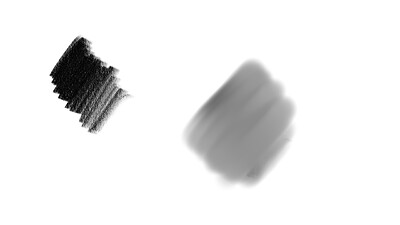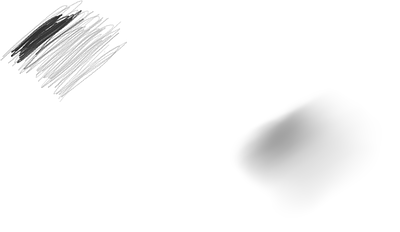I was experimenting with krita and wanted to try out doing blending from light to dark. I laid down some strokes using a pencil brush and selected the basic blender brush and got this weird result where sometimes strokes can get darker or lighter depending on the previous stroke and you can see overlapping “layers” so to speak of strokes that don’t look seamless at all. Why is that? And what am I doing wrong?
It’s hard to know what you could do differently as we don’t know which brush preset you’re using and what the settings are… but smooth blending is not hard to achieve once you learn the skill.
One thing I like to do is play with the blender preset’s settings like strength and opacity. If the blender you’ve chosen has strength turned on, then you can vary the pressure on your stylus.
Hi. I normally use stock brush settings and even tried different graphite brushes from both the stock brushes and a few other brush packs. They didn’t make much of a difference to me that I could notice. If you need more info, I’m happy to provide.
Why not give this new pencil bundle a try? With these presets, you set the colour to black and you’re ready to do pencil sketches. It came out about 4 months ago and is the latest edition of Krita pencil brushes.
I know what you mean about the basic blender. I find it more smudgy so I use it when doing wet brush paintings. When I want that smoother cotton wool kind of blending for my pencil drawings, I use the Blender Blur brush which looks like a cotton bud.
I’ve tried making my own graphite blenders by studying what tips brush makers have used and I try out some texture settings.
Meantime, see if any of these might do ok with blending…
I did a bit of additional experimentation. On Debian GNU/Linux, I got the results (more or less, room for improvement) I was seeking. Double checking the tablet/canvas settings on krita for microsoft windows, I had windows ink set to it. Reverting it to the other one, I got significantly better results without the weird overlapping lines when using a few different blenders such as the blender blur one.
You really think using the windows ink with krita was what was causing my issues? Why would that be?
Most Windows users find that turning off Windows Ink in Krita (and, importantly, doing the same in the tablet’s interface) works best. I say most and not all because there are an endles number of combinations of PCs and tablets, and each combination has its own unique settings quirks.
Do you also think it might have to do with how much pressure I apply with any of the blending brushes?
I don’t know the answer to that question. But I do know that the driver settings are more important than anything else. When they’re not right (and I by ‘they’ I mean both Krita and the tablet interface), Krita will not receive the right pen signals from the Windows operating system. The result is unexpected pen behaviour.
I don’t know why, but I get desirable results with the blender blur (looks like a q-tip), but undesirable results with the blender basic. Weird.
Here’s an example, the blender basic gives results like this, the other one, was the blender blur (q-tip).
You can see every stroke is practically separate from each other. Regardless if I use windows ink or not.
Blender basic looks more for smudging, moving the colors… Blender blur is more for getting smoother color blends. You can use both too. Also, you can play with the opacity of both of them. That’s what I do. ![]()
![]()
Blender blur would be MUCH closer to if I was to shade a sphere (for example) traditionally?
Wow. You’re right @CrazyCatBird modifying the opacity settings (or in my case, disabling opacity by pressure) made a night - day difference for the blender basic brush. Thank you for the tip. ![]()
You’re most welcome! ![]()
![]()
This topic was automatically closed 30 days after the last reply. New replies are no longer allowed.




